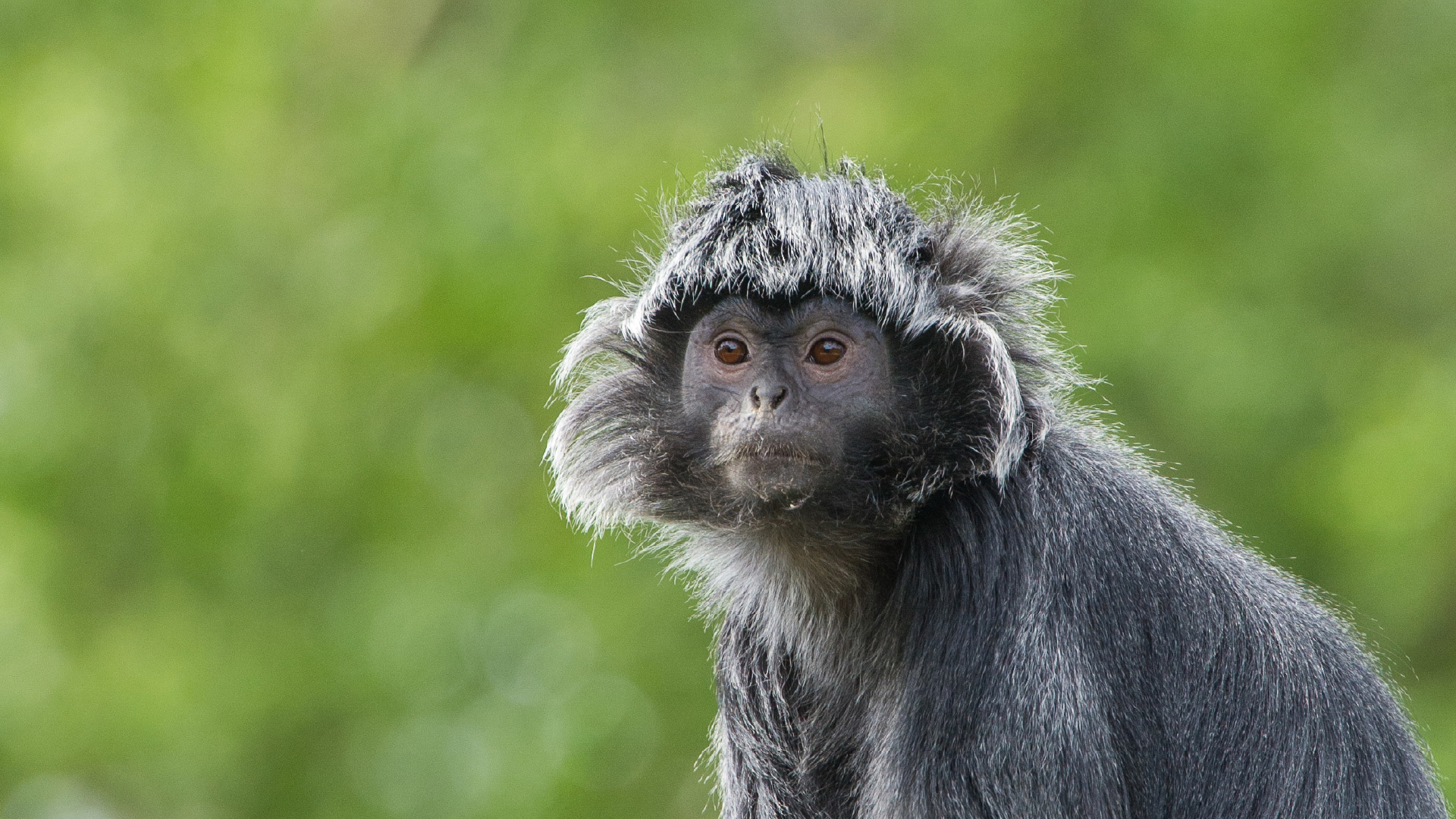East Javan Langur
Trachypithecus auratus
Habitat
Tropical rainforest and mangrove forests
Food
Leaves, seeds, fruits and flowers
Weight
± 7 kg
Age
± 20 years
IUCN Status
Kwetsbaar
Appearance
There are two colour varieties of East Javan langurs: orange and black. However, their colour has nothing to do with their sex. East Javan langurs with orange fur are more common in zoos than in the wild, though. In the wild, the orange variety only lives in one location in East Java. East Javan langurs have long tails. The hair around their face grows straight up and curls forward a bit.
Habitat
East Javan langurs live on the islands of Java, Bali and Lombok (in Indonesia). There, they dwell in tropical rainforests, deciduous forests, mangrove forests and marshes. East Javan langurs really love eating leaves. They have specialised teeth that enable them to chew all those leaves properly. Their digestive system is also adapted to digesting leaves.
Lifestyle
East Javan langurs live in groups of eight individuals on average. One male is in charge (of the harem). This type of group is also known as a harem. There are also occasionally all-male groups. The leaders don’t have an easy time, though. Because sometimes there are other males who want to take over as leader.
Behaviour
East Javan langurs are relatively docile animals. They don’t waste their energy. This is quite common among primates that eat lots of leaves. That’s because it’s difficult to digest leaves and it takes a lot of energy. And because leaves don’t contain much energy, East Javan langurs rest a lot. East Javan langurs communicate with each other mostly through sounds. In case of an emergency, they emit a loud call that sounds like ‘ghek-ghok-ghek-ghok’.

Reproduction
Langurs do not have a mating season. Females are ready to give birth for the first time when they are about three to four years old. The young have bright orange fur at birth. This is useful, because the other females can always spot the conspicuous colour. That way, everyone can help to protect the young in case of a threat. Their fur begins to fade after about seven months. Some langurs then turn black, others turn a lighter shade of orange. Their colour has nothing to do with their sex, unlike in many other primate species. The males eventually leave the group they were born into. Females remain in their natal group.
Situation in the wild
In the wild, East Javan langurs are primarily endangered because their natural habitat is disappearing. Humans are cutting down the forests where the East Javan langurs live, to make way for agriculture. East Javan langurs are an officially endangered species. Unfortunately, not everyone abides by the law and there is little enforcement, so people still hunt East Javan langurs.

At Apenheul
At Apenheul, the East Javan langurs are fed a fibre-rich, low-sugar diet. They eat lots of (young) leaves, spinach leaves, endives and chicory. They receive relatively little fruit here because the fruit available here contains far more sugar and fewer fibres than fruit in the wild. If they would eat too much fruit, they would become obese. In order to be able to serve these leaf-eaters fresh leaves all year round, we freeze large quantities of fresh leaves for them every spring.
Population management programme
Apenheul coordinates the European endangered species programme (EEP) for East Javan langurs. By working together with other international zoos, we help to maintain a genetically healthy population of East Javan langurs.
Fun facts
- East Javan langurs are picky eaters. They love fresh, young leaves. Because of this inconvenient diet, not many zoos keep East Javan langurs. There are only about 120 of them in Europe. Which makes seeing them at Apenheul all the more special!
- It’s striking that the relatively rare orange-coloured langurs are more common in zoos. In the wild, most langurs are black. We don’t know exactly why this is the case.
- In Hindi (an Indian language) the word langur means ‘long tail’.
Want to see the East Javan Langurs at Apenheul?
Get your tickets now and spot all the primate species!

Welcome to Apenheul
Open from:
10.00 hour